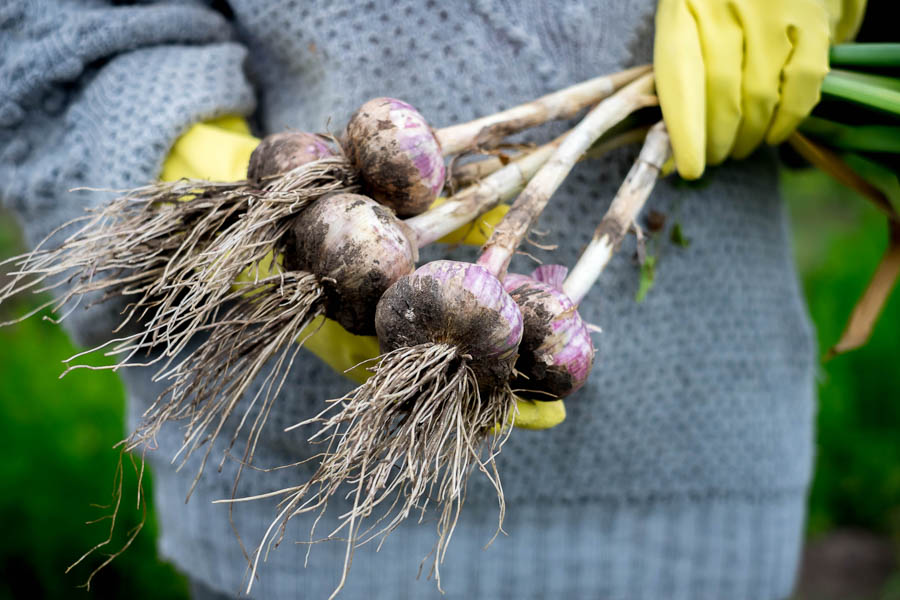Grow a Sustainable Patch of Garlic

In Mediterranean climates, fall is planting time for garlic. Some gardeners plant garlic in grid-like patterns in raised beds while others plant garlic cloves in nooks and crannies, around existing plants. But have you ever thought of using garlic in a sustainable garden? Or use sustainable gardening practices with respect to garlic?
Garlic can be an excellent addition to a sustainable garden. Plant garlic bulbs into carefully selected open areas. The ideal location for garlic will not receive excessive water, but is a location where you can increase or decrease water without negatively impacting surrounding plants. Avoid areas where water pools or drains. And choose an area where garlic will not be disturbed during its long growing season; garlic will not bulb properly if disturbed.
Use garlic’s upright, compact structure and place garlic plants in groups, as you would Bearded Iris. Or use garlic’s strong vertical lines to create an edible border. Or, use the curved garlic scapes to add an informal dynamic to your garden.
Experiment with naturalizing garlic in your garden. Leave some garlic bulbs in the ground to sprout the following year. A critical factor is avoiding rot. Using garlic in a sustainable garden is unlikely to produce the same large, uniform heads as those found in a dedicated raised bed, but you may be able to create a self-sustaining patch of garlic in your garden.
As an added twist, experiment with hardneck garlic varieties. Hardneck varieties are typically more attractive and flavorful than softneck varieties. While softneck garlic varieties are typically recommended for much of California’s coastal inland valleys and hardneck varieties are recommended for areas with colder winters, try using the microclimates of your particular garden to grow a hardneck variety. Choose an area of your garden that may have cooler temperatures, such as shade from plants or structures, even as temperatures begin to warm in spring.
Don’t know your GardenZeus climate zone? Click here.
Other articles of interest:
Sustainable Gardening: Growing Radishes to Improve Soil
Fava Beans in the Sustainable Garden
